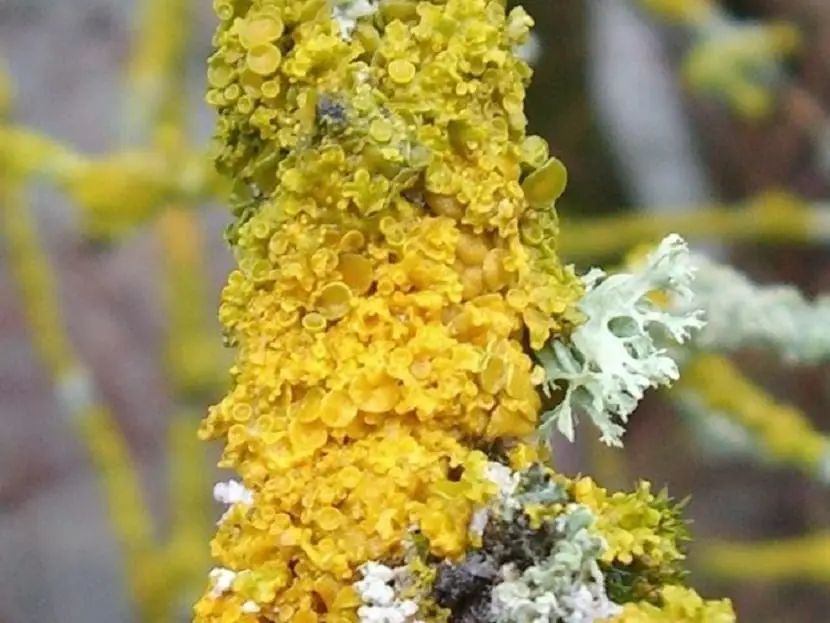

Algae, lichens, and moss frequently can form a green or medium gray type of growthwhich are dusty or mossy, something that can be of great concern to gardeners and although these are harmless sometimes this may indicate that there is a lack of vigor on the affected plant.
Lichen growing on tree limbs is often a concern for gardeners, although this is rarely a serious problem. These algae are more visible after wet weathersince mosses and lichens are present throughout the year but these are usually more visible in the winter time.
What is the problem?


Algae, mosses and lichens are some non-parasitic plant organisms which eventually settle on crust, rock, and other hard surfaces.
Lichens and algae are often mistaken for a serious fungal disease although fortunately they do not harm the plants in which they grow. They can also give a garden a mature look and prefer humid areas with minimal air movement. But algae, lichen, and moss growths can be common in plants that have no strengthso its presence may indicate that it needs a little more attention, particularly this occurs in the fruit trees and in the azaleas.
Growth and development of algae, lichens and moss


Regarding its appearance, we can say that on the trunks of trees and the leaves of evergreens and shrubs, algae can be seen as a green and dusty deposit. This makes trunks look unappealingwhich can make the leaves take on a dull and unsightly tone, since the alga called Trentepohilia looks like a bright orange deposit on the trunks of the trees and on the branches.
The lichens that usually grow on trees and shrubs are mainly of a gray color or also a green colorThey can be formed as if they were leafy mats or as vertical or hanging branches that are on the bark or on the wood. As for the moss we can say that various mosses can develop on the trunks or on the branches of trees and shrubs, the mosses can form large, thick, green, loose or yellowish-green tufts and also densely tangled tufts.
Why? Algae, lichens and mosses are mainly found in humid placesAs they not only need moisture for growth, they also need it for their reproduction.
Lichens particularly adapt well because are able to exist where nutrients exist and sometimes water is very scarce. But they grow slowly so unlike moss and algae, they are slow to settle.
Lichens prefer areas that have clean Airso they are more common in rural districts. Among the conditions that favor the growth in the branches we can find the trees or shrubs that do not have strength or vigor, particularly those that are already beginning to die and in these circumstances the growth of the lichen in particular is unfairly blamed for the poor condition of the affected plant. It also occurs in trees and shrubs that have been carelessespecially this occurs when these have become overpopulated, although lichens and moss also may appear on new plants vigorous in humid areas and are very common in western parts of Europe.
If algae, lichens and moss are considered unsightly and they can be controlled to a certain extent, managing to improve air circulation, a good way is to prune the branches that are overcrowded and cut the overhanging vegetation.
